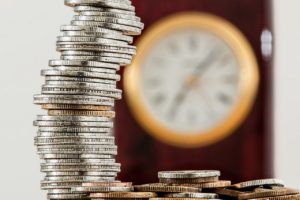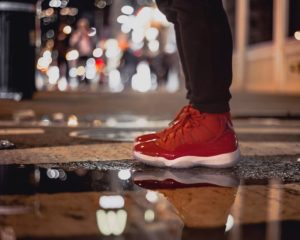
A lot has been written on the impact of the new leadership at the USPTO on the value of patents. Since his appointment in early 2018, Director Andrei Iancu has managed to introduce new initiatives that increase transparency and uniformity in how the USPTO and the courts interpret patent claims and validity challenges, reforms that are largely considered to have a positive impact on the value of patents. Some market followers who keep track of the venerable “pendulum”, which signals the patent climate de-jour, were quick to note that the pendulum started swinging ever so slightly back in favor of patents (as evidenced by some renewed interest in the patent marketplace).
From an IP valuation perspective, one should take a broader view at the factors impacting the value of IP Assets, patents as well as other assets. While patents are legal rights that are profoundly impacted by case law and the USPTO examination policy, focusing on legislative and judicial developments in the US alone constitute a very narrow lens by which to evaluate IP portfolios and the value they bring to the companies that hold them.
Below are some of the main trends in that we have seen in 2018, based on the IP portfolios and transactions that came through the door in our IP valuation practice:
- Over the last year, we have seen a clear increase in the weight of foreign assets in the IP portfolios presented to us; it used to be the case that the vast majority of assets were US assets, with a few counterparts that served more as a placeholder and less as a driver of economic value. Over the last couple of years, we have seen more and more patent portfolios used to support funding, strategic collaborations, international expansion or the sale of a company, where the major corpus of assets were foreign assets. More specifically, we have seen German, Korean, Chinese and Japanese assets anchoring an entire portfolio with very little and sometime no US counterparts at all. This is a telling sign of the increasing state of enforcement in foreign markets, as well as the increasing economic activity in foreign markets, which are usually the two reasons driving patenting decisions. I will stop short of also saying that this is a sign of the weakness of the US patent market, because I don’t believe that to be the case. Patenting decisions are made years in advance of the patent actually showing up. I also don’t believe that to be a ‘zero sum game’, i.e., if foreign IP assets drive more value, it doesn’t mean the US assets are worth less, but rather the entire pie is probably worth more.
- Another trend that we are seeing emerge is the return of “carrot licensing”, which is a term used to reference licensing activity that is driven by technology transfer, as opposed to licensing driven by enforcement (also known as “stick” licensing). This form of licensing is more closely associated with emerging technologies, where the licensor is interested in creating markets for new products using an idea protected either by trade secrets or by patents. With enforcement models taking a back seat for a variety of legal and judicial reasons, particularly in the US, we are seeing more and more licensing activities involving new technologies and the IP rights protecting them. While enforcement is looking into infringement in mature markets, technology transfer is looking to carve new markets. This is a clear indication not only of the decline in the value of patents as “naked assets”, but it also indicated the increase of trade secrets as a form of IP protection that can be monetized together or apart from patents. We worked with a few European companies looking to expand worldwide using IP licensing as their main business model, seeing that IP licensing allows expansion into new regions without bearing the marketing, manufacturing and distribution cost associated with the complementary business assets needed to bring new technology to market.
- There is a wave of innovation in the area of biotechnology, leverging on novel methods for molecular diagnostics and other technologies enabled by advances in genetic sequencing and gene editing, as well as the convergence of science with big data analytics and artificial intelligence (AI). Many of these technologies are initially developed by startup companies, that end up licensing to, or being acquired by, larger players. In such acquisitions or collaborations, we have seen IP rights – patents in particular – play a key role in determining the price and terms of the deal. IP assets in these areas are very valuable, and they gain their value from a technology transfer and new market perspective. As a matter of fact, IP assets in biotech and other life sciences companies are so valuable that they often survive the company even if the startup goes bankrupt for lack of funding, particularly if regulatory (FDA) approvals have been secured and other product milestones have been met.
- Over the last couple of years, we have seen the emergence of new digital assets: databases, cryptocurrency, and other types of assets that made their way from the digital world into the business world. The valuation profession is slow to keep up with these assets, and as a result we have to be very creative in how we value them, as no guidelines, comparable transactions or other points of reference exist. One interesting case we have worked on this year involves the valuation of a digital token for a token-presale (a token is an asset used in a Blockchain environment to facilitate transactions on the network). From a valuation perspective, valuing tokens and cryptocurrency in general poses a challenge, as the very nature of the asset is not clearly defined: is it a security, a commodity or a currency? Should the asset, and therefore the valuation thereof, be regulated by the SEC? Many of these valuations are done for tax reporting purposes, however there is no clear policy by the IRS on some of these assets and the regulations are evolving, which makes the valuation exercise somewhat of a moving target.
In conclusion, our experience in 2018 indicated that patents are only one component of the modern company’s IP portfolio. There are other types of intangible assets, including new categories of assets we haven’t seen before, that are emerging in the new digital economy, posing new valuation challenges but adding more sources of value for companies. Additionally, new technological advances are creating fertile ground for technology transfer and open innovation, processes that depend on IP rights and which give IP Assets great value.

